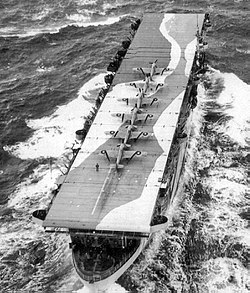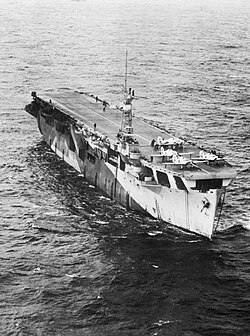| Ship | Aircraft | Displacement | Propulsion | Service |
|---|
| Laid down | Commissioned | Fate |
|---|
| Slinger | 24 | 14,000 long tons (14,225 t) | 2 Foster-Wheeler boilers; 2 Westinghouse geared turbines, 1 shaft | 25 May 1942 | 11 August 1943 | Returned to the USN on 27 February 1946 |
| Atheling | 24 | 14,000 long tons (14,225 t) | 2 Foster-Wheeler boilers; 2 Westinghouse geared turbines, 1 shaft | 9 June 1942 | 31 July 1943 | Returned to the USN on 13 December 1946 |
| Emperor | 24 | 14,000 long tons (14,225 t) | 2 Foster-Wheeler boilers; 2 Westinghouse geared turbines, 1 shaft | 23 June 1942 | 6 August 1943 | Returned to the USN on 4 February 1946 |
| Ameer | 24 | 14,000 long tons (14,225 t) | 2 Foster-Wheeler boilers; 2 Westinghouse geared turbines, 1 shaft | 18 July 1942 | 20 July 1943 | Returned to the USN on 17 January 1946 |
| Begum | 24 | 14,000 long tons (14,225 t) | 2 Foster-Wheeler boilers; 2 Westinghouse geared turbines, 1 shaft | 3 August 1942 | 2 August 1943 | Returned to the USN on 4 January 1946 |
| Trumpeter | 24 | 14,000 long tons (14,225 t) | 2 Foster-Wheeler boilers; 2 Westinghouse geared turbines, 1 shaft | 25 August 1942 | 4 August 1943 | Returned to the USN on 6 April 1946 |
| Empress | 24 | 14,000 long tons (14,225 t) | 2 Foster-Wheeler boilers; 2 Westinghouse geared turbines, 1 shaft | 9 September 1942 | 9 August 1943 | Returned to the USN on 4 February 1946 |
| Khedive | 24 | 14,000 long tons (14,225 t) | 2 Foster-Wheeler boilers; 2 Westinghouse geared turbines, 1 shaft | 30 December 1942 | 25 August 1943 | Returned to the USN on 26 January 1946 |
| Speaker | 24 | 14,000 long tons (14,225 t) | 2 Foster-Wheeler boilers; 2 Westinghouse geared turbines, 1 shaft | 9 October 1942 | 20 November 1943 | Returned to the USN on 17 July 1946 |
| Nabob | 24 | 14,000 long tons (14,225 t) | 2 Foster-Wheeler boilers; 2 Westinghouse geared turbines, 1 shaft | 20 October 1942 | 7 September 1943, into the Royal Canadian Navy under Royal Navy control | Returned to USN 16 March 1945 |
| Premier | 24 | 14,000 long tons (14,225 t) | 2 Foster-Wheeler boilers; 2 Westinghouse geared turbines, 1 shaft | 31 October 1942 | 3 November 1943 | Returned to the USN on 2 April 1946 |
| Shah | 24 | 14,000 long tons (14,225 t) | 2 Foster-Wheeler boilers; 2 Westinghouse geared turbines, 1 shaft | 13 November 1942 | 27 September 1943 | Returned to the USN on 6 December 1945 |
| Patroller | 24 | 14,000 long tons (14,225 t) | 2 Foster-Wheeler boilers; 2 Westinghouse geared turbines, 1 shaft | 27 November 1942 | 25 October 1943 | Returned to the USN on 13 December 1946 |
| Rajah | 24 | 14,000 long tons (14,225 t) | 2 Foster-Wheeler boilers; 2 Westinghouse geared turbines, 1 shaft | 17 December 1942 | 17 January 1944 | Returned to the USN on 13 December 1946 |
| Ranee | 24 | 14,000 long tons (14,225 t) | 2 Foster-Wheeler boilers; 2 Westinghouse geared turbines, 1 shaft | 5 January 1943 | 8 November 1943 | Returned to the USN on 21 November 1946 |
| Trouncer | 24 | 14,000 long tons (14,225 t) | 2 Foster-Wheeler boilers; 2 Westinghouse geared turbines, 1 shaft | 1 January 1943 | 31 January 1944 | Returned to the USN 3 March 1946 |
| Thane | 24 | 14,000 long tons (14,225 t) | 2 Foster-Wheeler boilers; 2 Westinghouse geared turbines, 1 shaft | 22 February 1943 | 19 November 1943 | Returned to the USN on 5 December 1945 |
| Queen | 24 | 14,000 long tons (14,225 t) | 2 Foster-Wheeler boilers; 2 Westinghouse geared turbines, 1 shaft | 12 March 1943 | 7 December 1943 | Returned to the USN on 31 October 1946 |
| Ruler | 24 | 14,000 long tons (14,225 t) | 2 Foster-Wheeler boilers; 2 Westinghouse geared turbines, 1 shaft | 21 March 1943 | 22 December 1943 | Returned to the USN on 29 January 1946 |
| Arbiter | 24 | 14,000 long tons (14,225 t) | 2 Foster-Wheeler boilers; 2 Westinghouse geared turbines, 1 shaft | 26 April 1943 | 31 December 1943 | Returned to the USN on 3 March 1946 |
| Smiter | 24 | 14,000 long tons (14,225 t) | 2 Foster-Wheeler boilers; 2 Westinghouse geared turbines, 1 shaft | 10 May 1943 | 20 January 1944 | Returned to the USN on 6 April 1946 |
| Puncher | 24 | 14,000 long tons (14,225 t) | 2 Foster-Wheeler boilers; 2 Westinghouse geared turbines, 1 shaft | 21 May 1943 | 5 February 1944, into the Royal Canadian Navy under Royal Navy control | Returned to the USN on 16 January 1946 |
| Reaper | 24 | 14,000 long tons (14,225 t) | 2 Foster-Wheeler boilers; 2 Westinghouse geared turbines, 1 shaft | 5 June 1943 | 21 February 1944 | Returned to the USN on 20 May 1946 |








